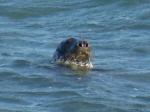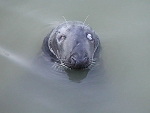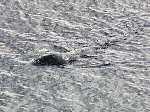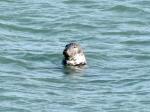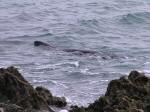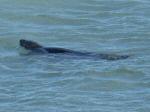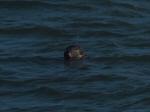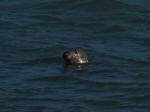Two species of seal are permanent residents in Britain
– the Grey Seal (Halichoerus grypus) and the Common, or Harbour,
seal (Phoca vitulina). Greys are larger, have flatter, longer heads with
nostrils set well apart, and they prefer rocky shores. Commons have a
relatively smaller head with a concave forehead and they prefer hauling
out on sandbanks. The common seal is up to 1.7 metres long, the grey 2
metres or more with bulls reaching 2.5–3.3 m (8.2–11 ft) long
and weighing 170–310 kg (370–680 lb). Devon and Cornwall has
mostly Grey Seals but Common Seals are occasionally seen in our waters.
The common seal is in fact less common in British waters than the grey
seal, at about 55,000 compared with around 120,000 grey seals. They are
however very common worldwide especially in the waters of the north Atlantic
and north Pacific Oceans, the UK having only about five percent of the
worlds population. Grey seals are the largest living carnivore in Britain
with around 36 to 40 per cent of the world population found around the
UK coast. Grey Seals are one of the rarer seal species in the world therefore
making the health and conservation of the British population very important.
|
